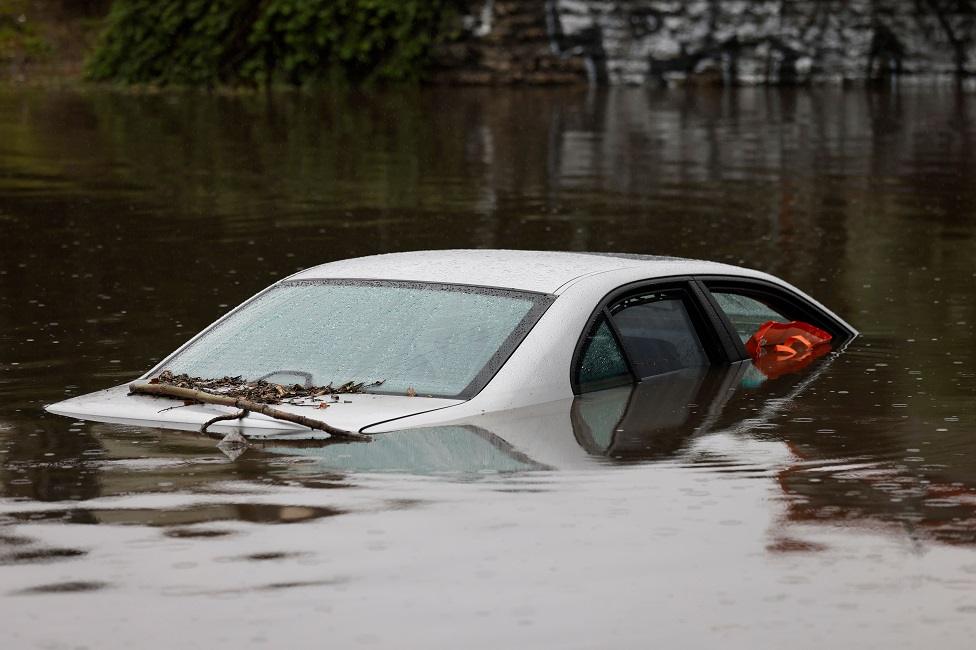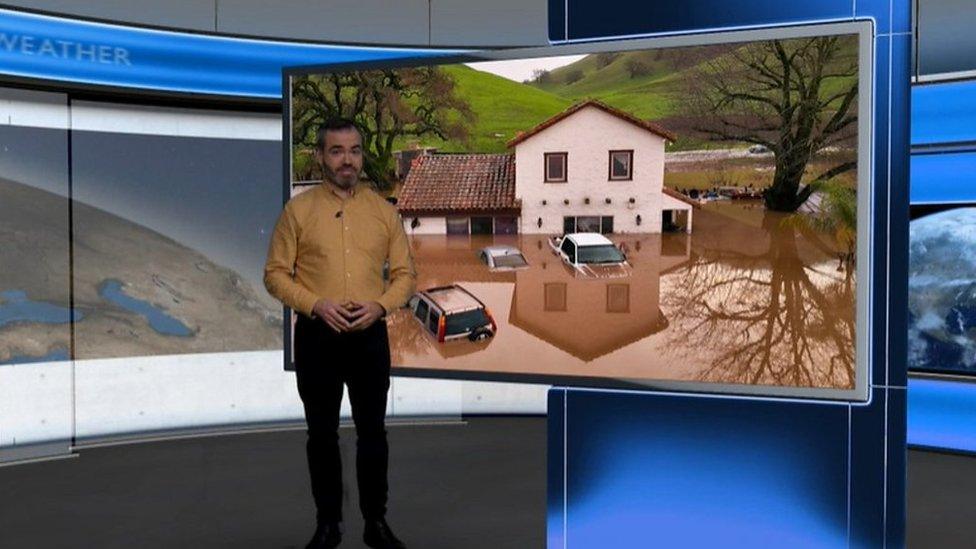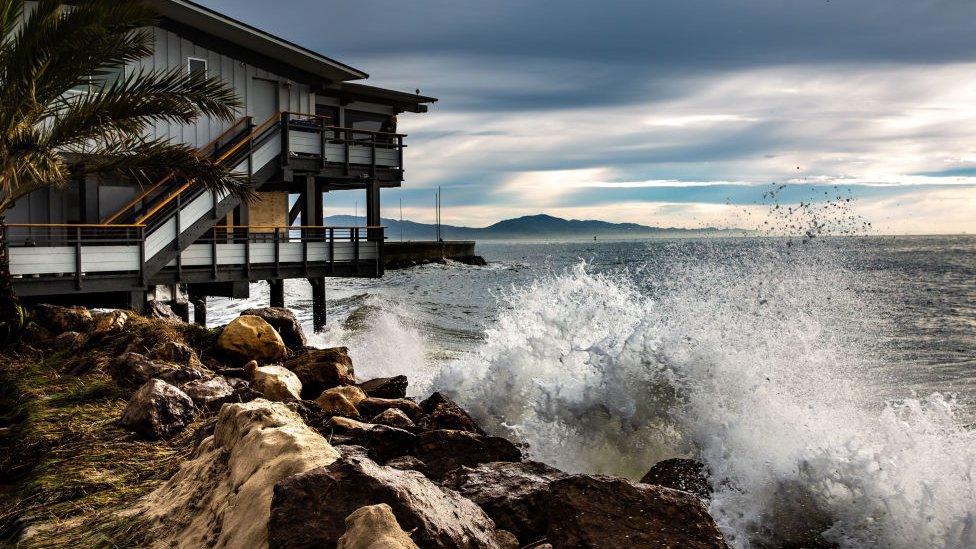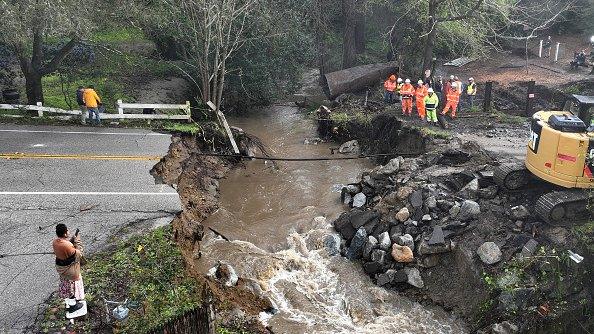Atmospheric river: 'Life-threatening' storm lashes California with rain, wind and snow
- Published
Ben Rich explains how an atmospheric river forms
Nearly 500,000 California residents have lost power as forecasters warn of "one of the most dramatic weather days in recent memory".
Heavy rain and high winds are now lashing an area from Santa Barbara to Los Angeles, and could bring "life-threatening" flooding through Tuesday.
It is the result of an "atmospheric river" effect, which is caused by airborne currents of dense moisture.
About 37 million residents, or 94% of the population, are under flood alerts.
As the storm arrived on Sunday evening, state governor Gavin Newsom declared a state of emergency in eight central and southern counties.
Watch: Flooded streets, downed trees and snow as storms batter California
A state of emergency will allow the quick release of state resources for rescue, recovery and repair efforts.
"California: this is a serious storm with dangerous and potentially life-threatening impacts," Mr Newsom said in a statement.
"Please pay attention to any emergency orders or alerts from local officials."
Large parts of the state were already pounded earlier this week by another atmospheric river that brought record rainfall, gusty winds and heavy snow at high elevations.
Atmospheric rivers are a phenomenon in which water evaporates into the air and is carried along by the wind, forming long currents that flow in the sky like rivers flow on land.
This system is known as a "Pineapple Express" because it brings warm subtropical moisture across the Pacific from near Hawaii.
Experts are warning residents that flooding and travel problems could be exacerbated from remnants of the previous storm, which caused significant damage, prompted water rescues and closed parts of the iconic Pacific Coast Highway.
Thousands of residents in parts of southern and northern California were ordered to evacuate on Saturday before the worst effects of the storm bore down.
In central and southern coastline areas, officials said more than 8,500 emergency first responders have been mobilised and some seven million sandbags have been distributed.
National Weather Service forecasters say the storm could "likely produce 24 to 36 hours (or more) of continuous rain", with the worst expected between Sunday and Tuesday.
The region could see up to a month's worth of rain - about three to 12 inches (seven to 30 cm) - with rainfall rates peaking in some areas at an inch per hour.
This could cause urban flooding, mudslides and flash flooding that necessitates swift water rescues, the NWS said.
The Los Angeles River "will fill quickly and become a raging river and a very dangerous place to be", the weather service added.
Heavy mountain snow and damaging winds are also expected across much of the state.
The first of the two storms this week halted cable car service in the San Francisco Bay area before drenching Los Angeles and San Diego with torrential rain.

A car sits fully submerged in water in Long Beach, California last week
Also in northern California, around San Jose, a 100ft (30m) redwood tree crashed onto a car, trapping a girl inside, before firefighters managed to free her. She suffered minor injuries.
A San Diego resident Ruben Gomez told The Associated Press that firefighters had to rescue his parents after their home flooded with 6ft (2m) of water.
The torrential rain from that storm broke a record for daily rainfall - 3.37in fell at Los Angeles International Airport, breaking the 1960 record of 1.55in.
Parts of the Sierra Nevada already reported 12 to 14in (30 to 35.5 cm) of snow and the upcoming storm could bring four feet more of snowfall to the mountains.
Last year, more than 20 people died in the state from similar damaging atmospheric river storms.
It also caused $4.6bn (£3.6bn) in damage, according to CBS News, the BBC's US partner.
The weather service has warned that this year's storm could be similar or worse.
Flooding and blizzards to hit California
Related topics
- Attribution
- Published2 February 2024

- Published13 March 2023

- Published11 March 2023
